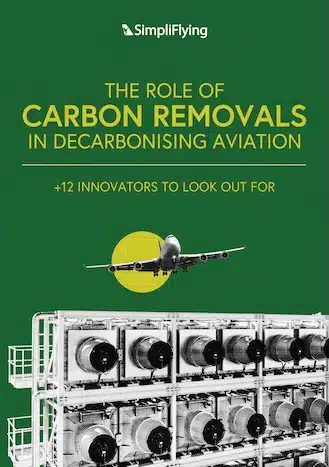REPORT
The Role of Carbon Removals
in Decarbonising Aviation
The Role of Carbon Removals
in Decarbonising Aviation
Our report explores the potential of carbon dioxide removal (CDR), the challenges it faces, and why it could be the breakthrough aviation needs.
Where do we stand?
As industries worldwide grapple with their 2050 net-zero goals, carbon dioxide removal (CDR) – capturing and removing CO2 via various methods – is emerging as a crucial tool in the fight against climate change.
According to the Intergovernmental Panel on Climate Change (IPCC), all 1.5-degree pathways, even with overshoot, depend on carbon removals coming into play. As a result, according to McKinsey, the global market for CDR could reach $1.2 trillion by 2050.
For the aviation sector, which faces unique decarbonisation challenges, CDR offers a dual opportunity that could reshape the industry’s approach to sustainability.
This report explores the potential of CDR, the challenges it faces, and why it could be the breakthrough aviation needs.





The implications for aviation
Technology & Cost Uncertainties
The high costs and uncertainties of CDR technologies, like Direct Air Capture, necessitate flexible sustainability strategies for airlines.
Strategic planning & partnerships
Rather than betting on a single solution, carriers should build diverse carbon removal portfolios that balance risk and potential across multiple technologies.
External factors & support
Regulatory support, through policies like the U.S. 45Q tax credit offering up to $180 per tonne for DAC, will play a crucial role in making CDR technologies economically viable for widespread adoption.
